Real-World Helper Exoskeletons Just Got Closer to Reality
Nov 19, 2025 —

Researchers Matthew Gombolay, left, and Aaron Young used the lower-limb exoskeleton demonstrated in the background to test their new approach to creating exoskeleton controllers. They use huge amounts of existing data on how people move to create functional controllers able to provide meaningful assistance. And unlike earlier controllers, they do not require hours and hours of additional training and data collection with each specific exoskeleton device.
To make useful wearable robotic devices that can help stroke patients or people with amputated limbs, the computer brains driving the systems must be trained. That takes time and money — lots of time and money. And researchers need specially equipped labs to collect mountains of human data for training.
Even when engineers have a working device and brain, called a controller, changes and improvements to the exoskeleton system typically mean data collection and training start all over again. The process is expensive and makes bringing fully functional exoskeletons or robotic limbs into the real world largely impractical.
Not anymore, thanks to Georgia Tech engineers and computer scientists.
They’ve created an artificial intelligence tool that can turn huge amounts of existing data on how people move into functional exoskeleton controllers. No data collection, retraining, and hours upon hours of additional lab time required for each specific device.
Their approach has produced an exoskeleton brain capable of offering meaningful assistance across a huge range of hip and knee movements that works as well as the best controllers currently available. Their worked was published Nov. 19 in Science Robotics.
Joshua Stewart
College of Engineering
The Nexus of Economic Security and Technology
Why Georgia Matters for South Korea: Georgia is home to some of the largest Korean investments in the United States, including Hyundai Motor Group’s $7.6 billion Metaplant–the biggest economic development project in state history–and significant supply-chain growth across the state.
Georgia Tech Ranked No. 7 Globally in Interdisciplinary Science Rankings
Nov 20, 2025 —
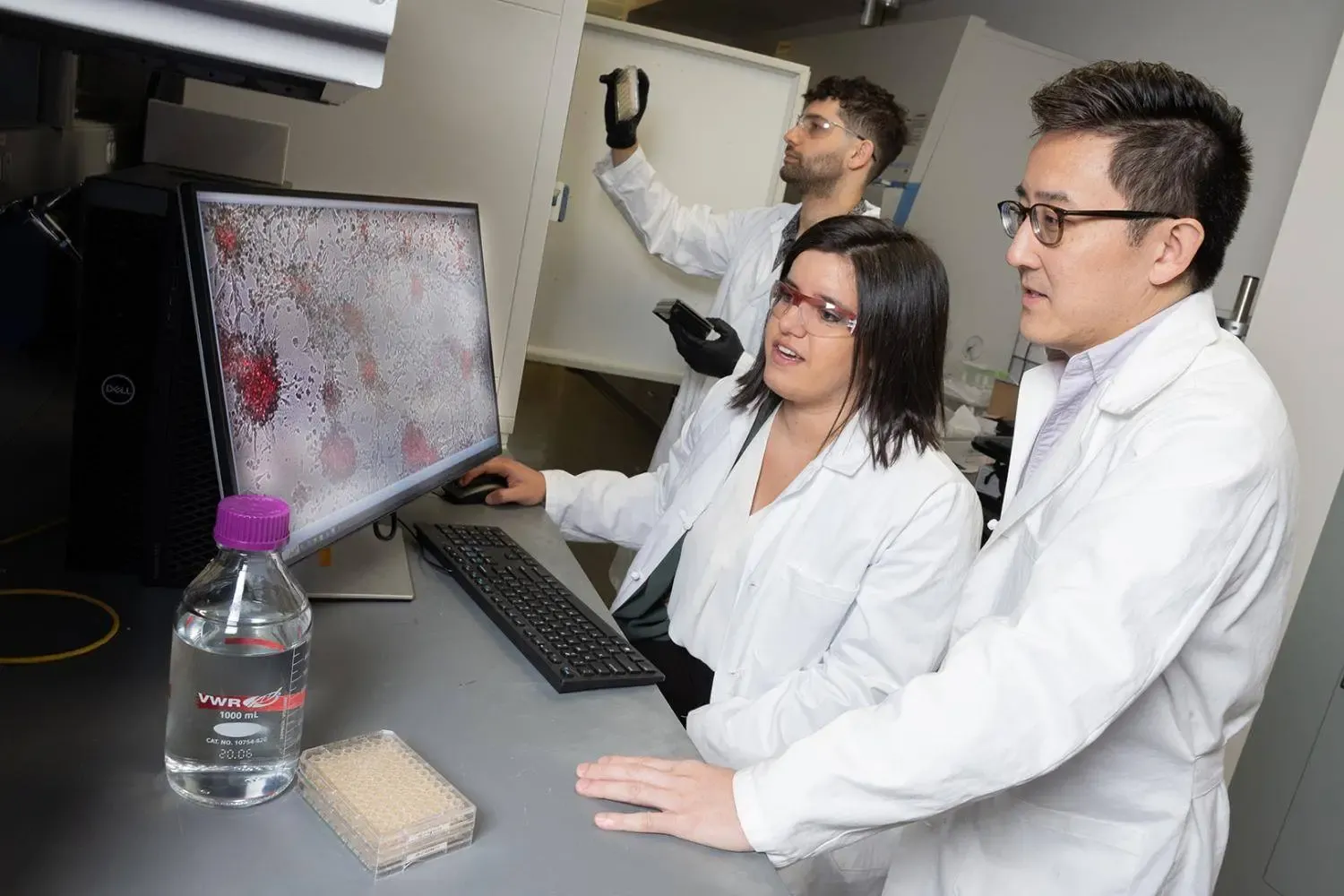
Georgia Institute of Technology has been ranked 7th in the world in the 2026 Times Higher Education Interdisciplinary Science Rankings, in association with Schmidt Science Fellows. This designation underscores Georgia Tech’s leadership in research that solves global challenges.
“Interdisciplinary research is at the heart of Georgia Tech’s mission,” said Tim Lieuwen, executive vice president for Research. “Our faculty, students, and research teams work across disciplines to create transformative solutions in areas such as healthcare, energy, advanced manufacturing, and artificial intelligence. This ranking reflects the strength of our collaborative culture and the impact of our research on society.”
As a top R1 research university, Georgia Tech is shaping the future of basic and applied research by pursuing inventive solutions to the world’s most pressing problems. Whether discovering cancer treatments or developing new methods to power our communities, work at the Institute focuses on improving the human condition.
Teams from all seven Georgia Tech colleges, 11 interdisciplinary research institutes, the Georgia Tech Research Institute, Enterprise Innovation Institute, and hundreds of research labs and centers work together to transform ideas into real results.
Contact: Angela Ayers
Professor Earns Test-of-Time Award at AI and Computer Gaming Conference
Nov 12, 2025 —
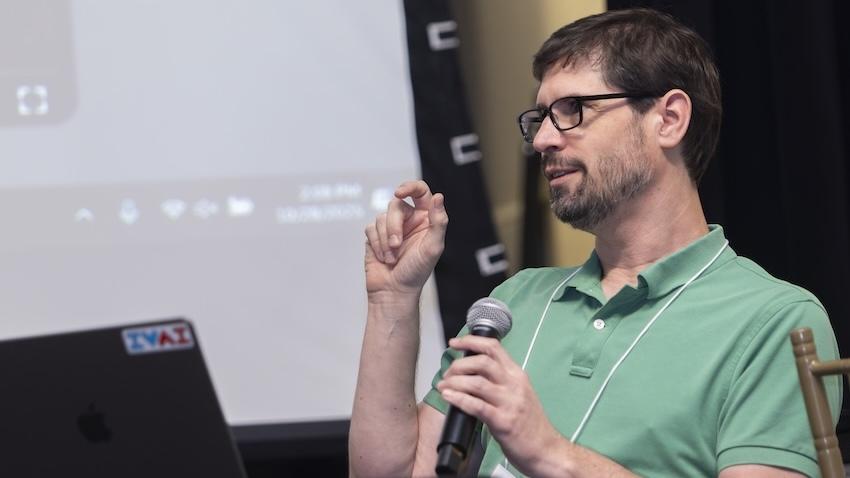
One of the top conferences for AI and computer games is recognizing a School of Interactive Computing professor with its first-ever test-of-time award.
At its event this week in Alberta, Canada, the AAAI Conference on Artificial Intelligence and Interactive Digital Entertainment (AIIDE) is honoring Professor Mark Riedl. The award also honors University of Utah Professor and Division of Games Chair Michael Young, Riedl’s Ph.D. advisor.
Riedl studied under Young at North Carolina State University.
Their 2005 paper, From Linear Story Generation to Branching Story Graphs, highlighted the challenges of using AI to create interactive gaming narratives in which user actions influence the story’s progression.
In 2005, computer game systems that supported linear, non-branching games were widely used. Riedl introduced an innovative mathematical formula for interactive stories ranging from choose-your-own-adventure novels to modern computer games.
“We didn’t use the term ‘generative AI’ back then, but I was working on AI for the generation of creative artifacts,” Riedl said. “This was before we had practical deep learning or large language models.
“One of the reasons this paper is still relevant 20 years later is that it didn’t just present a technology, it attempted to provide a framework for solving a grand challenge in AI.”
That challenge is still ongoing, Riedl said. Game designers continue to struggle with balancing story coherence against the amount of narrative control afforded to users.
“When users exercise a high degree of control within the environment, it is likely that their actions will change the state of the world in ways that may interfere with the causal dependencies between actions as intended within a storyline,” Riedl and Young wrote in the paper.
“Narrative mediation makes linear narratives interactive. The question is: Is the expressive power of narrative mediation at least as powerful as the story graph representation?”
AIIDE is being held this week at the University of Alberta in Edmonton, Alberta. Riedl will receive the award on Wednesday.
IPaT Research Lightning Talks
Speakers:
Aaron Gabryluk, Research Scientist, IPaT
Brian Jones, Principal Research Engineer, IPaT
Richard Starr, Director of Research Operations and Research Scientist, IPaT
Scott Gilliland, Senior Research Scientist, IPaT
The New Shriners Children’s Research Institute
Speaker: Leanne West, Principal Research Scientist and Chief Engineer of pediatric technologies, Georgia Tech
Abstract: Leanne West will discuss the newly announced Shriners Children’s Research Institute that will be co-located with Georgia Tech at Science Square. Leanne will discuss the research priorities, the data faculty will have access to, the timeline for implementation, examples of current work, and upcoming events.
Wearable Health Equity Workshop
Nov 10, 2025 — Atlanta, GA
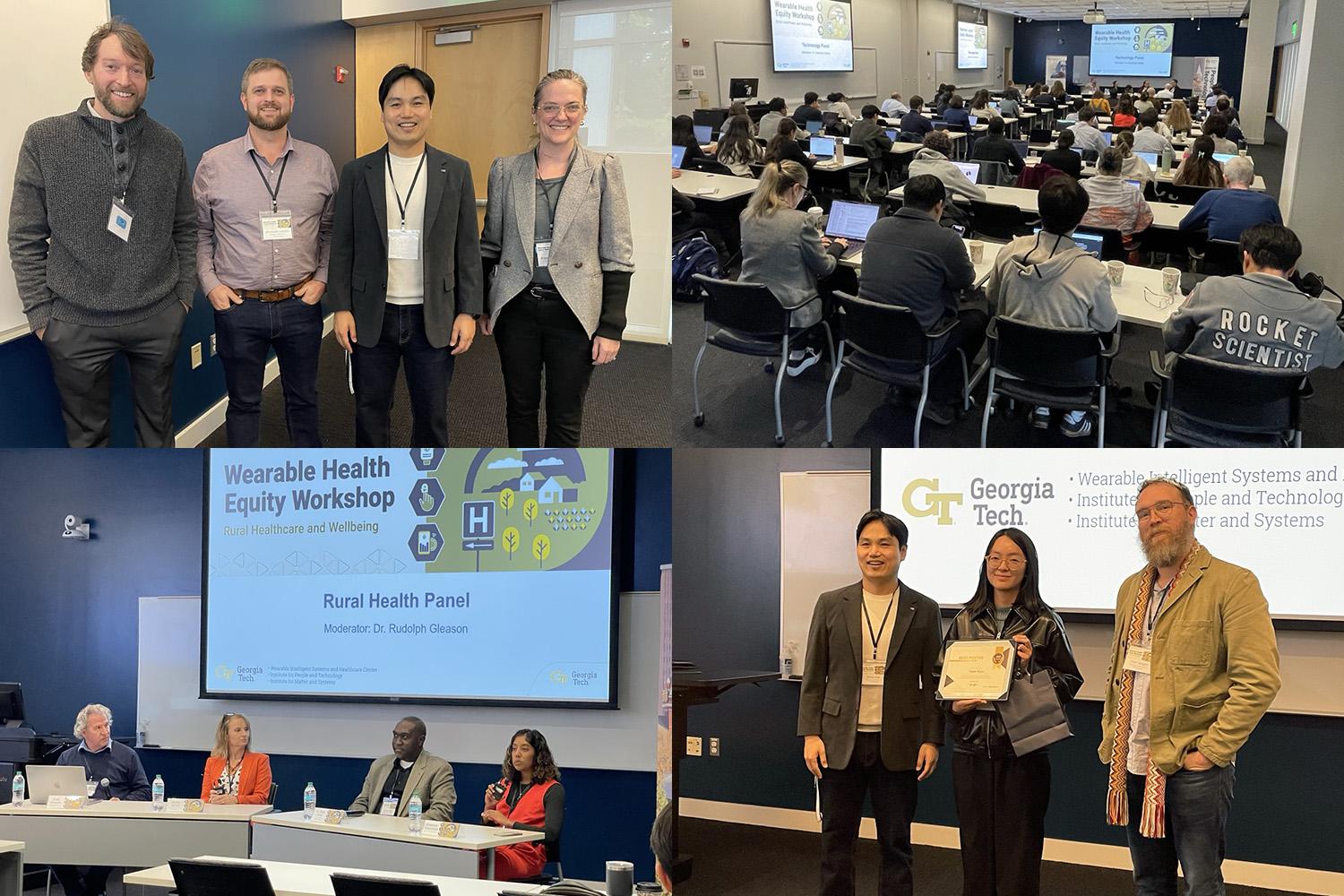
Picture upper left: Philipp Gutruf, Alex Adams, Hong Yeo, and Kimberlee McKay. Picture upper right: workshop attendees. Picture lower left: Rudy Gleason, Shelly Spires, Brad Jones, and Ruwanthi Ekanayake. Picture lower right: Hong Yeo, Garan Byun, and Clint Zeagler.
The second Wearable Health Equity Workshop was held on October 30, 2025, at the Georgia Tech Marcus Nanotechnology Building. The workshop presented some of the latest wearable health technologies and offered practical solutions for advancing rural healthcare.
The all-day workshop was sponsored by the Georgia Tech Wearable Intelligent Systems and Healthcare Center (WISH Center), the Institute for People and Technology (IPaT), and the Institute for Matter and Systems (IMS).
Academic, clinical, and industry leaders gathered to learn about some of the most exciting wearable technologies and explore proven, practical solutions for improving health in underserved rural areas. Medical professionals from Sioux Falls, South Dakota and Albany, Georgia shared real-world solutions to providing more effective healthcare in their regional, rural areas.
The morning keynote speaker was Philipp Gutruf, Ph.D., an associate professor and associate department head of biomedical engineering at the University of Arizona. Gutruf’s research focuses on creating devices that intimately integrate with biological systems, developing wireless, battery-free, and fully implantable platforms for biosignal monitoring, neurostimulation, and biointerfaces.
The afternoon keynote speaker was Kimberlee McKay, M.D., with Avera Medical Group in Sioux Falls, South Dakota. McKay is a physician-leader in women’s health who has redefined how obstetrics and gynecology are delivered across rural and underserved communities.
A technology panel moderated by Alexander Adams, Ph.D., assistant professor, in the College of Computing at Georgia Tech included:
* Andrea Braden, M.D., Founder & CEO of Lybbie and medical director of the Atlanta Birth Center
* Farrokh Ayazi, Ph.D., director of the Georgia Tech Analog Consortium, Regents Entrepreneur, and Ken Byers Professorship in Microsystems
* Rosa Arriaga, Ph.D., associate professor in the School of Interactive Computing, College of Computing at Georgia Tech
* Steve Xu, M.D., CEO Sibel Health, medical director at Querrey Simpson Institute for Bioelectronics Northwestern University was scheduled, but was unable to attend.
In the afternoon, a rural health panel was moderated by Rudolph Gleason, Ph.D., professor in mechanical engineering and biomedical engineering at Georgia Tech.
Those panelists were:
* Shelly Spires, M.S.M., CEO Albany Area Primary Health Care, Inc.
* W. Brad Jones, Ph.D., CEO Life Well Promotions
* Ruwanthi Ekanayake, M.D./Ph.D. candidate, Emory University - Rollins School of Public Health and Emory School of Medicine
The best poster awards were won by postdoctoral research fellow Jimin Lee, Ph.D., and mechanical engineering doctoral student Garan Byun. The best rapid talk award winner was Ramy Ghanim, a doctoral student in chemical engineering.
Key faculty organizers of this year’s event included W. Hong Yeo, director of the WISH Center and professor in the Woodruff School of Mechanical Engineering and the Wallace H. Coulter Department of Biomedical Engineering; Clint Zeagler, director of strategic partnerships in IPaT; Josh Lee, research program manager in the WISH Center; Alexander Adams, assistant professor, School of Interactive Computing; and Rudy Gleason, professor in the Woodruff School of Mechanical Engineering and the Wallace H. Coulter Department of Biomedical Engineering.
Walter Rich
Foley Scholar 2025 Winners and Finalists
Nov 06, 2025 — Atlanta, GA
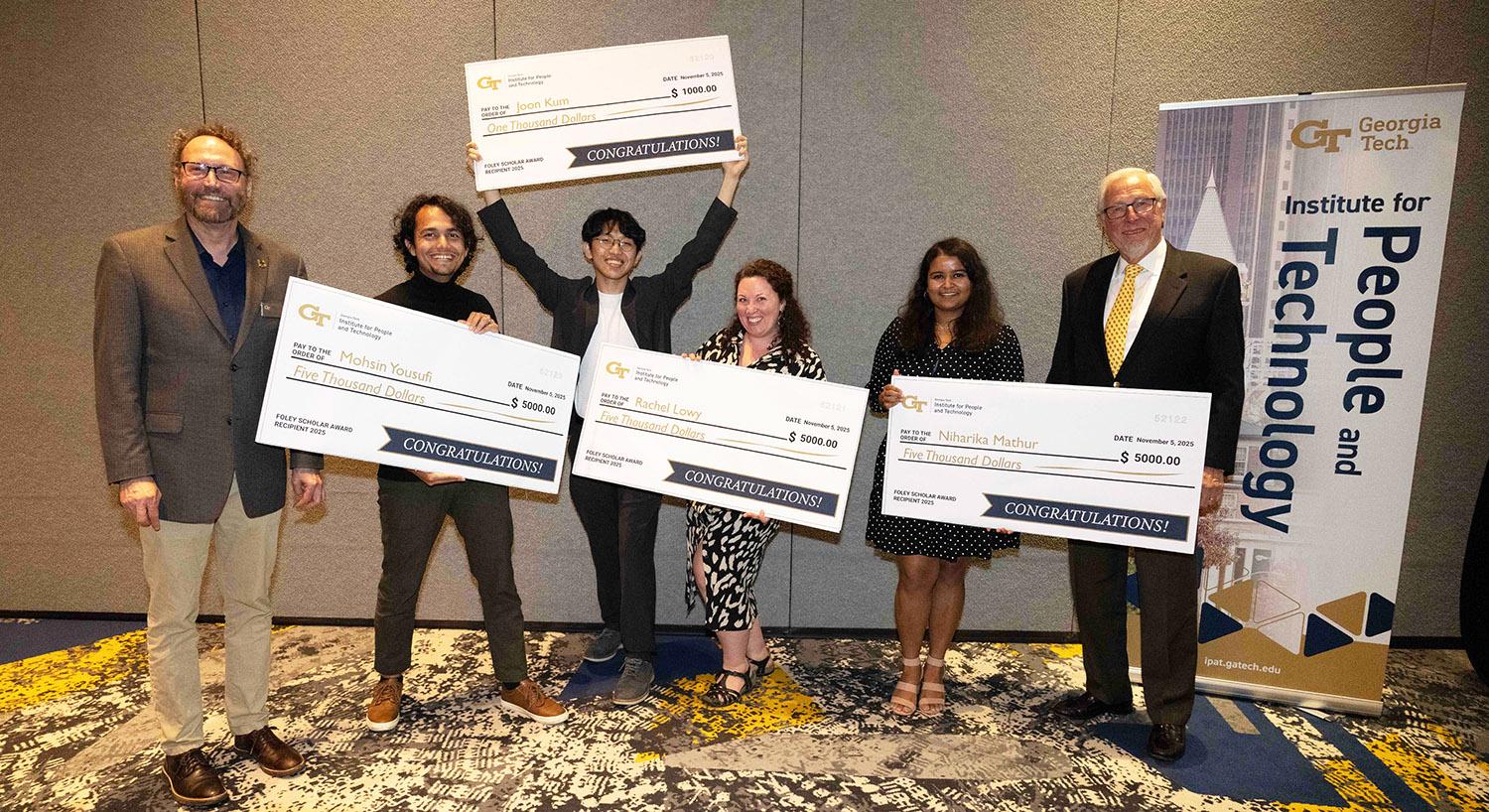
Pictured (left-to-right): Micheal Best, Mohsin Yousufi, Joon Kum, Rachel Lowy, Niharika Mathur, and James Foley.
The Foley Scholar Awards recognize the achievements of top graduate students whose vision and research are shaping the future of how people interact with and value technology. Previous finalists have originated from the College of Engineering, College of Computer Science, College of Design, and the Ivan Allen College of Liberal Arts.
Winners and finalists for the 2025 Foley Scholar Awards were celebrated at Georgia Tech's hotel and convention center on November 5, 2025. The event was hosted by the Institute for People and Technology (IPaT) with its executive director, Michael Best, serving as the master of ceremonies as each finalist was recognized for their innovative research.
Many winners of this scholarship have moved into faculty positions or became industry leaders in their research areas.
"Both the winners and the finalists represent the brightest minds that Georgia Tech has to offer," said Michael Best. "Our finalist candidate pool is always composed of truly outstanding researchers. Selecting the winners is never easy," said Best.
James Foley, professor emeritus and computing pioneer in graphics and human-computer interaction for whom the awards are named, once again delivered inspiring and valuable insight at the conclusion of the evening's festivities celebrating the achievements of all finalists.
Congratulations to the 2025 Foley Scholar winners who are:
Joon Kum, M.S. student in human-computer interaction was awarded $1,000.
Rachel Lowy, Ph.D. student in human-computer interaction was awarded $5,000.
Niharika Mathur, Ph.D student in human-centered computing was awarded $5,000.
Mohsin Yousufi, Ph.D student in human centered computing was awarded $5,000.
The finalists in the master's category were Umme Ammara, Jo Chung, Joon Kum, and Christine Taylor.
The finalists in the Ph.D. category were Grace Barkhuff, Rachel Lowy, Niharika Mathur, Shravika Mittal, Michelle Reckner, Mohsin Yousufi, Yilun Zha, and Qiao Zhang.
A short description of each finalists' unique research along with their Georgia Tech faculty advisor is listed below:
Umme Ammara is a master's student in human computer interaction advised by Michael Best and Carrie Bruce. Her research vision is using human-centered design to improve healthcare systems in underserved settings.
Jo Chung is a master's student in computer science advised by Betsy DiSalvo. Her research vision is to design interactive systems that empower users through meaningful engagement and equitable access.
Joon Kum is a master's student in human computer interaction advised by Ashok Goel. His research vision is closely aligned with IPaT’s mission and values. He believes in the power of interdisciplinary research to support teachers and students, especially for those who are marginalized and underrepresented.
Christine Taylor is a master's student in human computer interaction advised by Maribeth Coleman. Her core research vision is to design meaningful, human-centered technologies that address high-stakes problems in collaboration with the communities they serve. For example, one of her current research projects focuses on designing an AI predictive tool to detect patient deterioration at Children’s Hospital of Atlanta.
Grace Barkhuff is a Ph.D. student in human-centered computing advised by Ellen Zegura. Her research vision centers around computing education and ethics. For example, her current research seeks to understand how instructors can ethically use GenAI in the higher education classroom.
Rachel Lowy is a Ph.D. student in human-centered computing advised by Jennifer Kim. Her research focuses on building accessible technologies that foster learning, agency, and inclusion for people with disabilities and neurodivergent people, whose cognitive and learning profiles differ from those of the broader population, through strengths-based understandings of their skillsets.
Niharika Mathur is a Ph.D. student in human-centered computing advised by Sonia Chernova and Elizabeth Mynatt. Her research vision involve building human-centered AI systems that not just perform reliably, but also explain themselves in user-aligned ways.
Shravika Mittal is a Ph.D. student in computer science advised by Munmun De Choudhury. Her research goal is to help create a safe, inclusive, and responsible online information ecosystem, one that empowers vulnerable groups with equitable knowledge, the freedom to communicate their struggles openly, and a supportive community.
Michelle Reckner is a Ph.D. student in civil engineering advised by Iris Tien. Her research vision is to develop the most effective decision-making methodologies possible utilizing available data to determine whether to repair old infrastructure or construct new infrastructure while considering the types of infrastructure that will most benefit a community.
Mohsin Yousufi is a Ph.D. student in digital media advised by Yanni Loukissas. His research vision is to investigate and build creative technologies that address systemic epistemic injustices and reinvigorate democratic civic engagement.
Yilun Zha is a Ph.D. student in architecture advised by Ellen Dunham-Jones and Hui Cai. His research addresses food challenges by developing and applying geospatial computational methods to investigate how the design of the built environment and emerging technologies influence dietary behaviors and contribute to diet-related diseases.
Qiao Zhang is a Ph.D. student in computer science advised by Christopher MacLellan. Her research involves designing and investigating human-AI teaming studies—identifying suitable tasks, agent types, and natural paths for alignment and adaptation.
A collection of photos from the November 5, 2025, Foley Scholar awards dinner are available here.
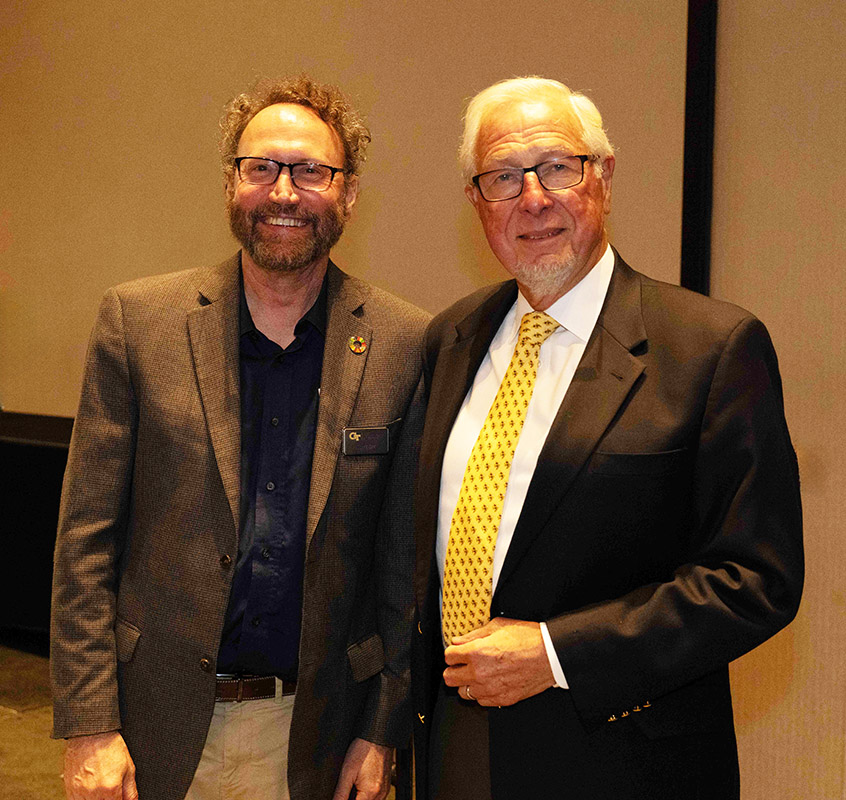
IPaT Executive Director Micheal Best (left) pictured with James Foley, professor emeritus and a computing pioneer in graphics and human-computer interaction.
Walter Rich
Conversations@TechSquare: VRlandia
VRlandia, part of the School of Psychology at Georgia Tech, is a multi-functional space, collection of equipment, and community of researchers that supports research spanning different topics within the VR/AR/XR space. Use of the lab is open to GT faculty who are members of VRlandia, and the students working with those member faculty. As a community we seek to research the next frontier of XR related developments and help students do the same.
